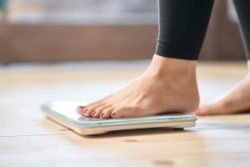Is there a difference between fat loss and weight loss? | Physiques Gym
What is weight loss and fat loss, and why is it important to know the difference
Have you ever wondered of there is a difference between losing weight and losing fat? You might be surprised to learn that they are actually two different things! When it comes to weight loss, there are a lot of things that people don’t understand.
They sound synonymous, but they’re not the same thing at all. Many people think that if they just lose weight, they’ll automatically start seeing changes in their body composition, that they will start looking like the influencers they see on Instagram or TikToc. Many think that if they loose weight, they will be lean and shredded. And others think that fat loss and weight loss are the same thing.
If you want to achieve real fat loss, you need to be aware of the difference between these two terms and how to go about it. In this blog post, we’ll break down the key differences between weight loss and fat loss so you can make sure you’re on the right track to reaching your goals.What is weight loss
Weight loss is a decrease in body weight, including water loss, bone weight, muscle mass and fat loss. Weight loss can be achieved through a variety of means, including dieting and exercise. A common form is the result of an illness like fever or injury that causes one’s body weight to decrease involuntarily, such as losing five pounds after getting sick. Another common form of weight loss is going several days without eating or eating very little.
What is fat loss
Fat is an important structural and functional component of the human body. We all have fat. Some of it is stored under our skin, around vital organs to protect us from injury or even just in specific places like hips and thighs.
Fat helps to regulate movement within cells by providing energy reserves when your body needs energy to perform normal bodily functions, your body can access the fat “stores”. These essential bodily functions include temperature regulation; immune system function, and much more.
When you over eat, your body will store the excess food as fat to then burn it off. However if you are not active enough for your body’s natural process of getting rid its fat stores in order provide energy through calorie burning – it just keeps on storing!
Reducing body fat can be a challenging task, but with the right guidance it’s not impossible. Physiques Gym personal trainers have many strategies that we use to achieve this goal. Programs are created for the specific individual based on their needs but most all include strength and weight training and meal plans. With health concerns coming out of obesity in America it is now more important than ever that we keep ourselves healthy by staying leaner!
How to measure progress
One of the most common questions that people have when they are starting their fitness journey is how to measure their progress. This can be especially confusing because there are so many ways to measure progress.
In this post, we’ll explain the different ways to measure weight loss and fat loss, and we’ll help you figure out which one is best for you.
You can measure your weight loss very easily by standing on a scale at home. When the scale is less, then you have lost weight. If the scale is more, then you have gained weight.
Now, when it comes to measuring your fat loss, this can be a bit more tricky.
A quick method of assessing how your body is changing, is to take photos at various stages during your journey. Take pictures from both above-the-waistline areas such as hips and thighs along with underarm regions – this will provide an insight into how much muscle mass may have developed during training while also giving an idea about what parts might still look flabby.
The most accurate method of measuring your fat loss is to start by learning your body composition. These measurements will identify what your body fat percentage is and how many pounds of fat you have on your body. Once your body fat percentage is calculated, you will be able to calculate how much of your body is lean mass, i.e. bones, organs, ligaments, tendons and muscle mass. As you progress your body fat percentage should decrease.
There are many apps and websites that will help you calculate your body composition. You can also reach out to Physiques Gym for guidance on where to start.
The losing weight vs. losing fat
Once you know your body composition, also known as BMI (body mass index), the next step is to determine if it is considered healthy for your height. The CDC has a website – https://www.cdc.gov/obesity/adult/defining.html – to help identify your BMI classification.
If your BMI is in the obesity range, then weight loss should be your number one goal. Believe it not, with a few lifestyle changes and discipline this can be easily achieved. While I understand, this is easier said than done, especially if you are unsure as to where to start. Physiques Gym personal trainers will help you learn these lifestyle changes and teach you how to implement them into your life. The primary focus at this stage, is to get you healthy!
Then as your weight comes down, and you start developing new lifestyle habits, you can transition to fat loss.
Finally, when you are ready to take your health and fitness to the next level, contact Physiques Gym to schedule an assessment. Our coaches will guide you to become your best self, mentally and physically stronger and more disciplined. Contact us by email, info@physiquesgym.net or call (602)953-1111, or text (602)741-6339. Author:





